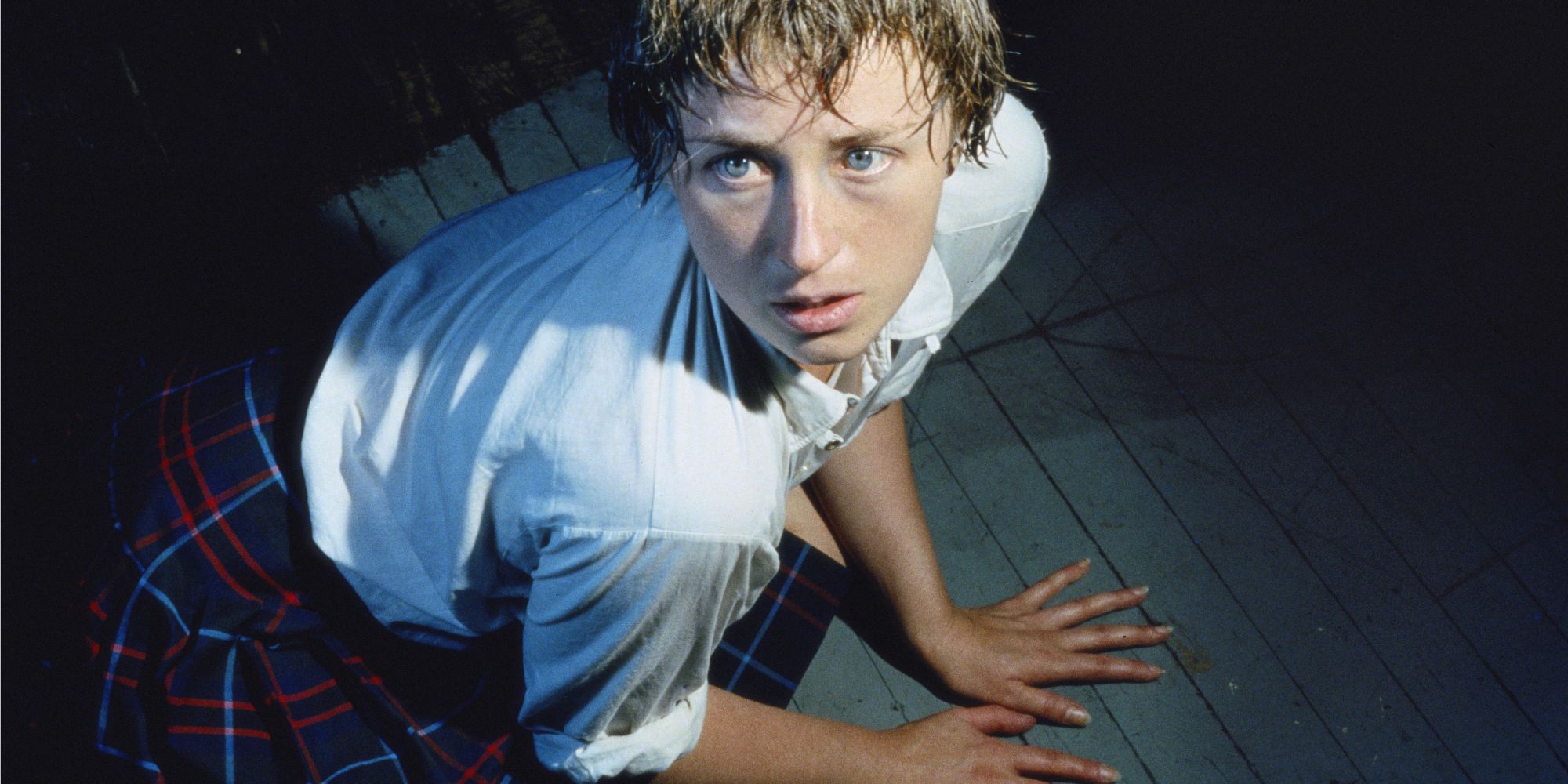Cindy Sherman has created hundreds of characters. In her photographs she has become a Hollywood diva, a creepy clown, a train conductor, a Botox-laden art collector, a cover girl and even a human-pig hybrid.
She has used props and prosthethics, wigs and costumes, and copious amounts of makeup. She has referenced cinema, television, art, fashion, advertising and pornography.
Famously, Sherman prefers to work alone and cover every role on a shoot – including, of course, the role of model in each photograph. But don’t be tempted to call them selfies.
“I think the most important thing to understand about Cindy’s work is that there’s nothing to do with selfies,” said Paul Moorhouse, curator of a vast retrospective of Sherman’s work at London’s National Portrait Gallery.
“That’s the misunderstanding that instantly gets people barking up the wrong tree, because they think ‘Oh, these are all different aspects of Cindy’s personality.’ They’re not. They are, nevertheless, all Cindy. People sometimes even think that they may be different artists, but this is one person, inhabiting different roles purely to create an illusory appearance.”
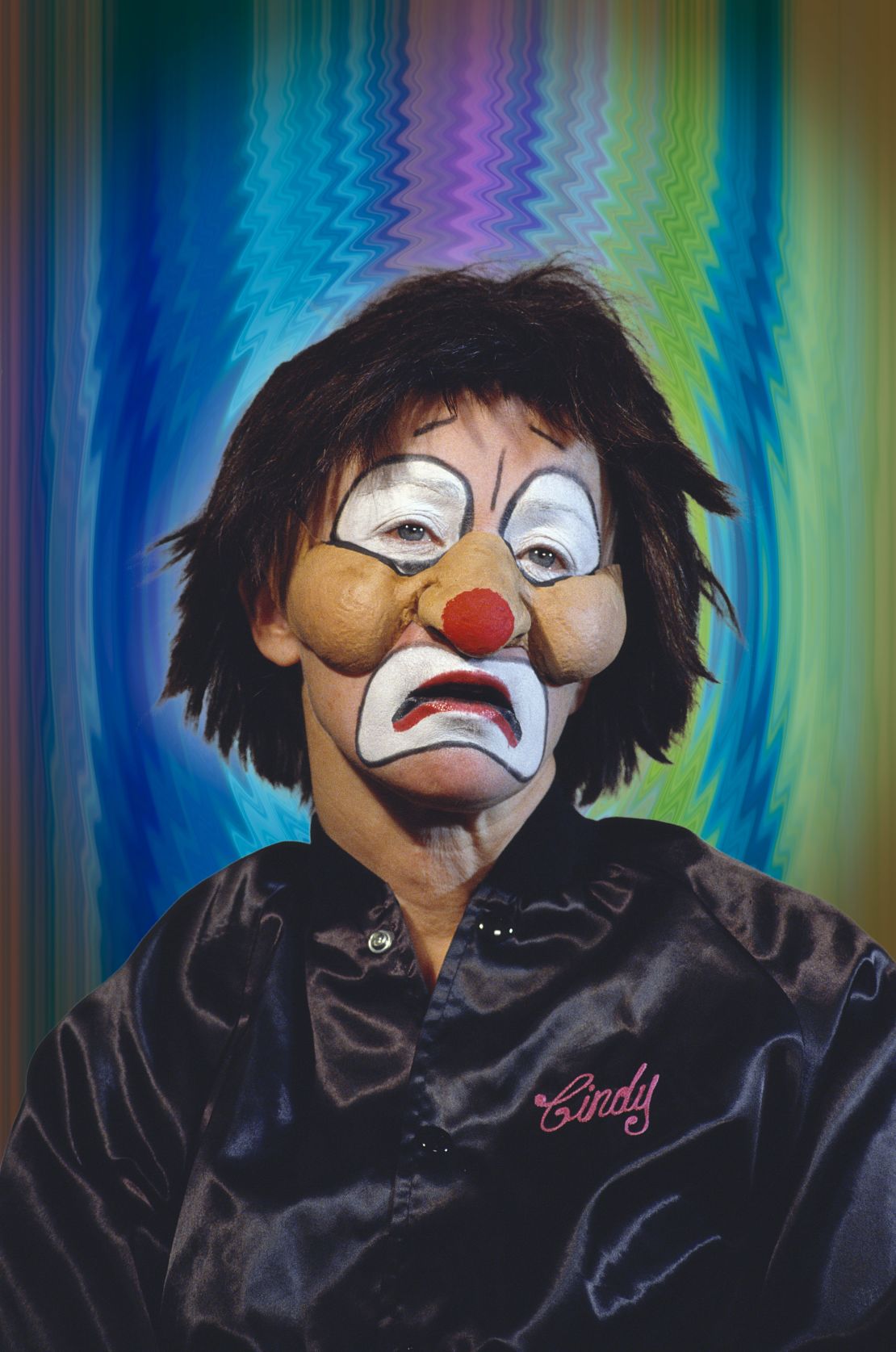
Beautifully presented, the exhibition covers the artist’s 40-year exploration into the relationship between appearance and reality through more than 190 works.
Sherman’s breakthrough project, “Untitled Film Stills” from 1977-80, is presented in its entirety at the exhibition for the first time. In the 69 black-and-white images, shot mostly outdoors, Sherman evokes the tropes of various film genres, from American B-movies and film noir to Italian realism, while evoking Hitckcock, Rossellini and Godard. The project also marks a singular deviation from the artist’s modus operandi, as she will afterward shun the outside for the confines of her studio and almost always prefer color film.
'Cindy Sherman' at the National Portrait Gallery
The exhibition also includes a reconstruction of Sherman’s New York studio, never-before-seen backstage shots from her student years at the University College at Buffalo, and a new work, “Untitled #602,” created in collaboration with Stella McCartney.
All works are untitled and given only a progressive number, and apart from a general introduction to each series, the exhibition does not try to explain or deconstruct each image, encouraging viewers to do so themselves.
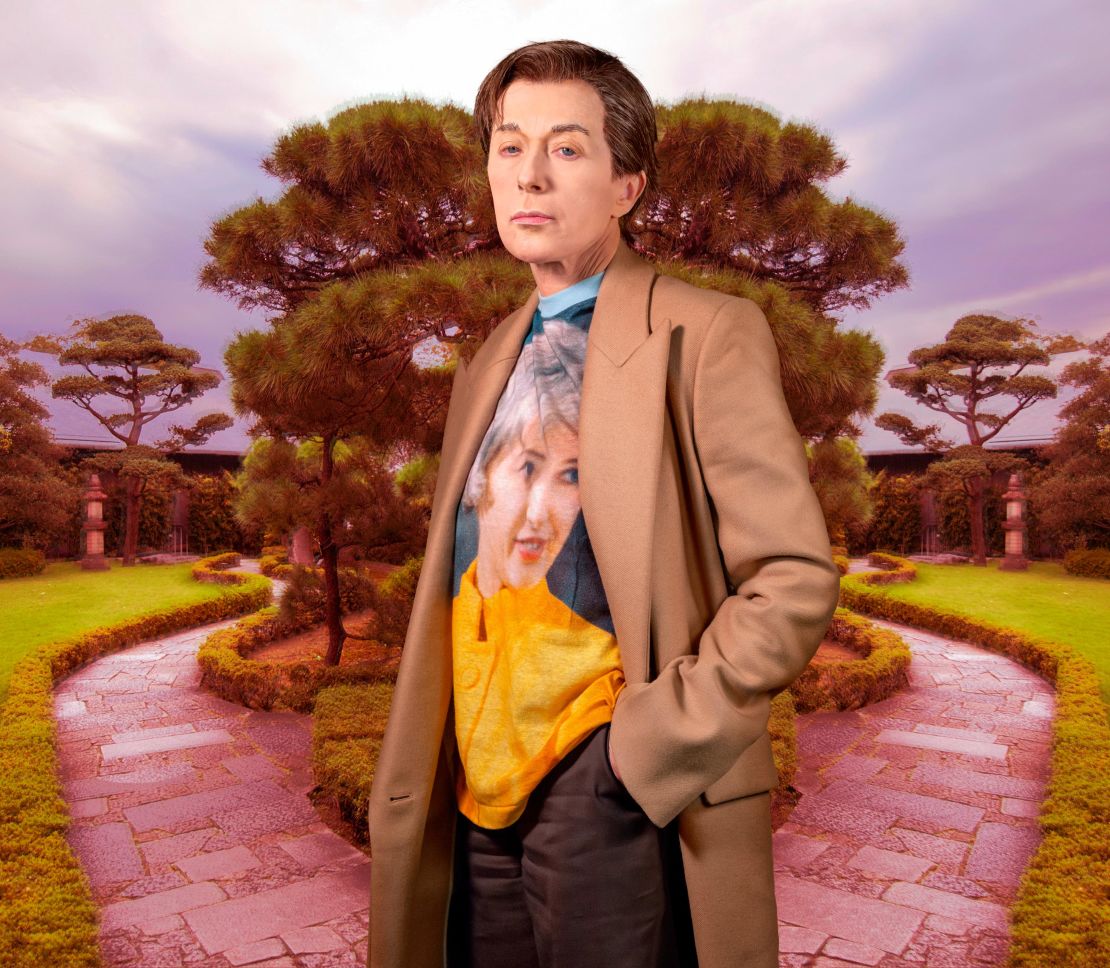
“Cindy herself never declares a position,” said Moorhouse. “She is someone who is creating an appearance that doesn’t have any basis in her identity. She never says what it’s about, except to say it doesn’t have a message. But I I think you’d be mistaken to think that’s all there is to it. I think the deeper part of this is the presence of appearance in all our lives.
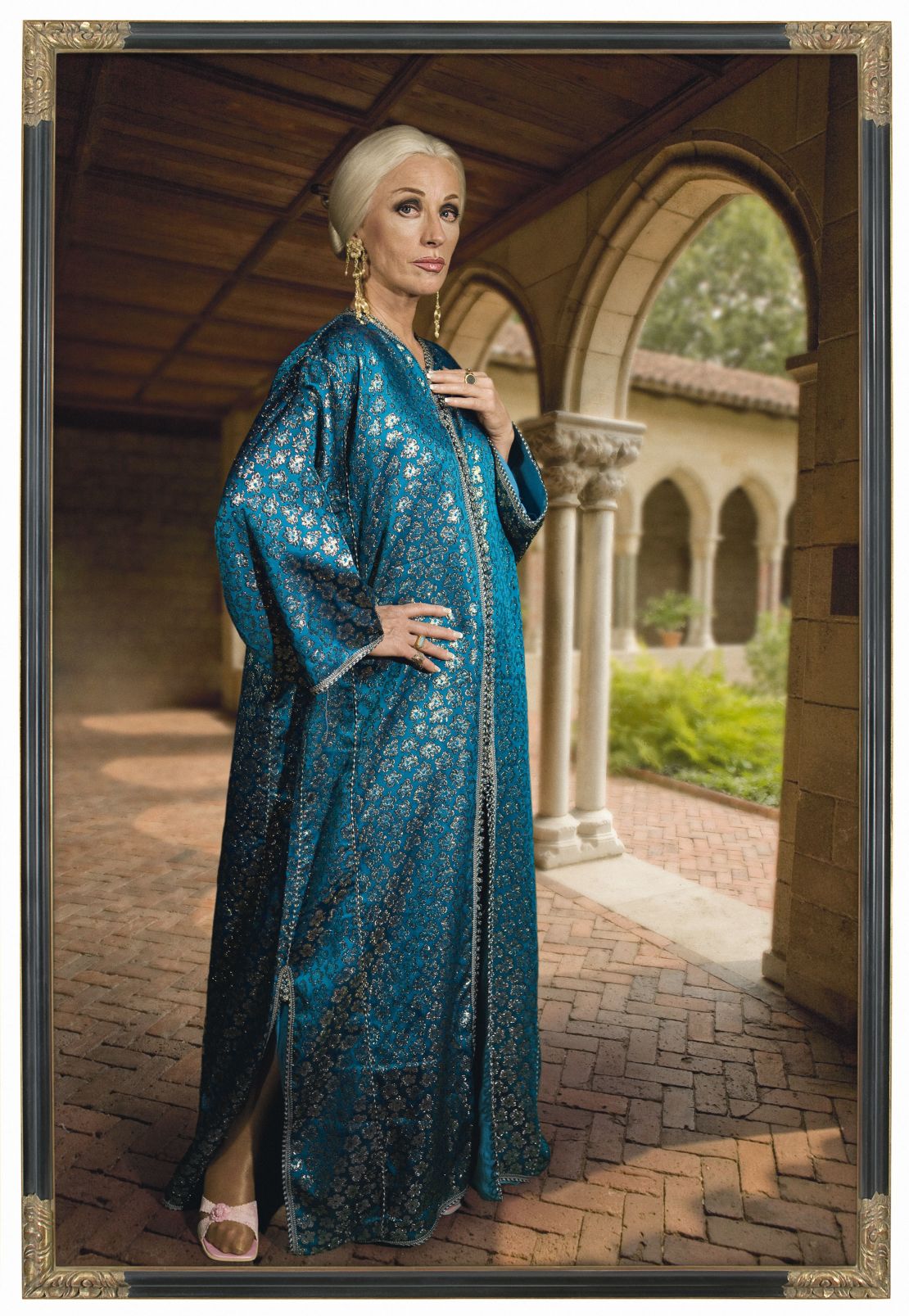
“She is investigating that part of the human experience, the fact that we’re surrounded constantly by appearances, other people we don’t know anything about, and we have to try and understand who those people purely by looking at how they appear to us. So this presence of appearance in her work has a really fundamental human dimension.”
Sherman’s prescient reflections on appearance are particularly evident in her fashion work. Shortly after graduating, in 1976, she created a series based on fashion magazine covers, showing triptychs composed of the original, herself made up to resemble the original, and herself mocking the original.

In the mid-1980s she responded to an ad commission for a New York boutique with images that were more disturbing than glamorous.
“It’s a very incestuous relationship that she has with the fashion world,” said Moorhouse. “The commission was intended as a celebration of the costumes that she was invited to wear by Jean Paul Gaultier and Comme des Gar?ons. And of course Cindy didn’t do that at all. Instead of making the clothes look glamorous and sophisticated, she made the women wearing them look deranged and fraught and neurotic. It was a complete subversion of fashion.”
At the time, she explained that she was “disgusted with how people get themselves to look beautiful,” and wanted to make fun of fashion. But instead of running away, fashion houses lapped it up and continued to commission her.
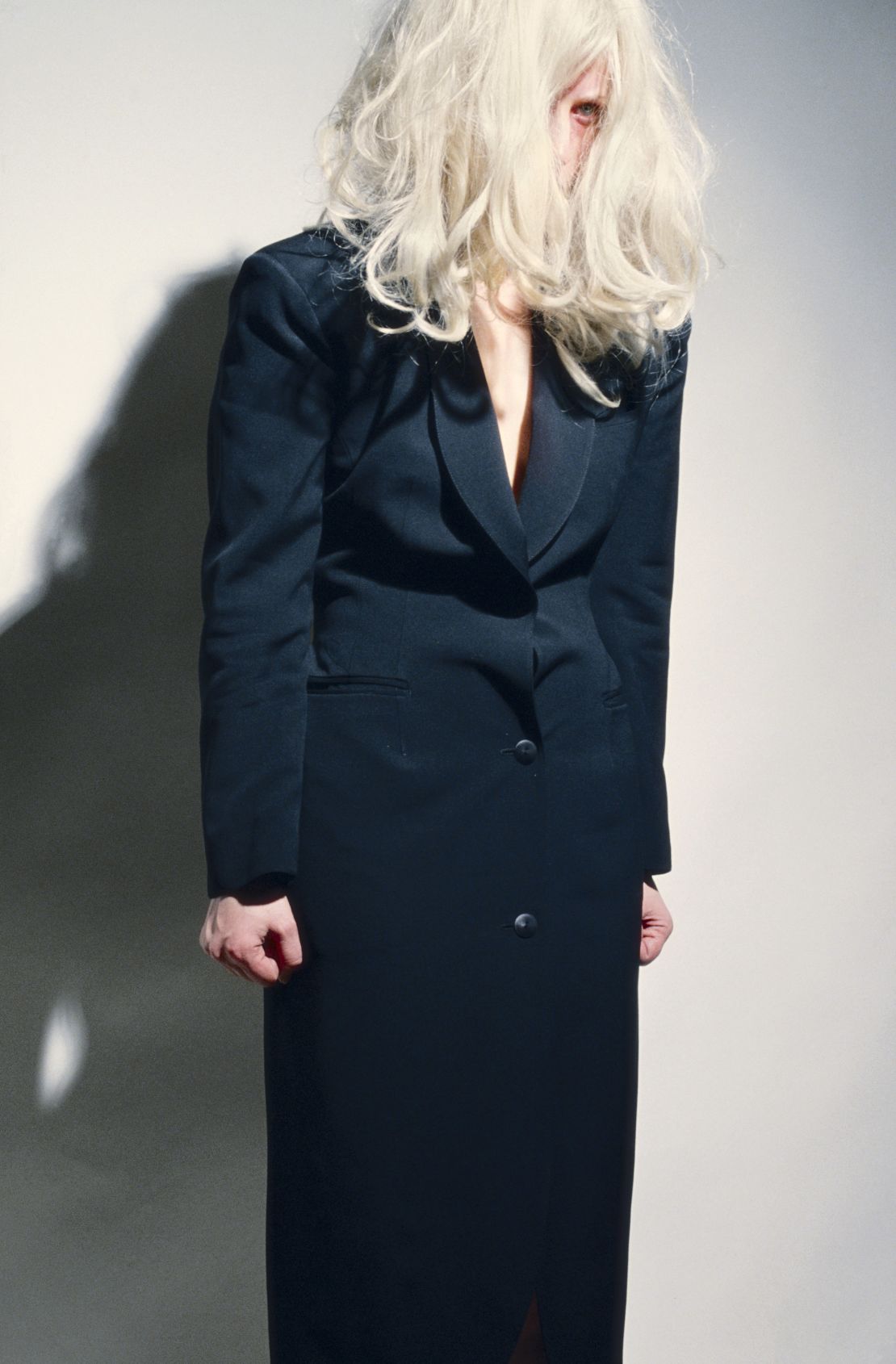
The far-reaching diversity of Sherman’s work finds its unifying theme (at least in the London exhibition) in the form of a quote from a Hitchcock film: “Tell me everything you saw and what you think it means.”
The quote is from 1954’s “Rear Window,” in which a photographer suffers a leg injury and ends up scrutinizing his neighbors by looking out into the courtyard while wheelchair bound.
“She did say the film really influenced her when she was younger,” said Moorhouse. “I think that quote summarizes her work completely, because it presents a challenge, an invitation to the viewer. These are enigmatic appearances and they don’t have a prescription, but they have lots of invitations to people, to make up their minds about what they think it means.”

